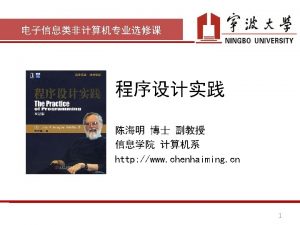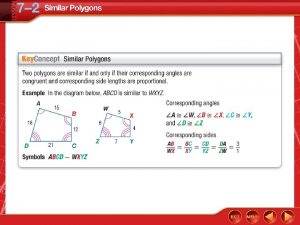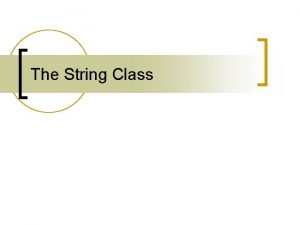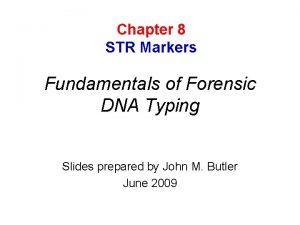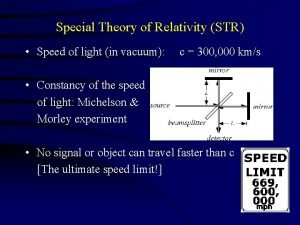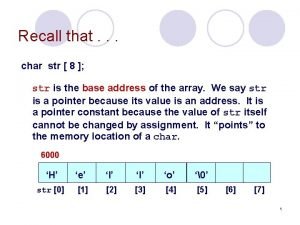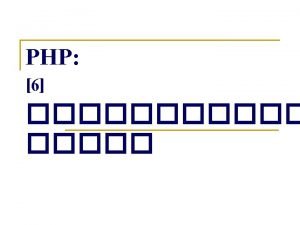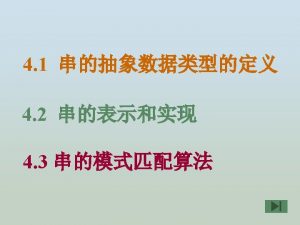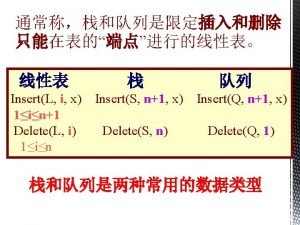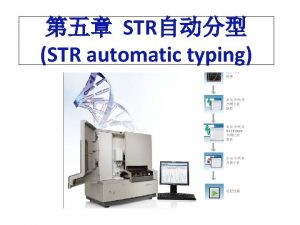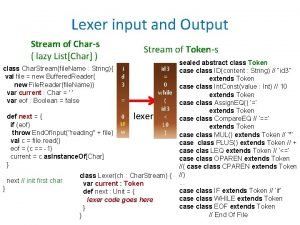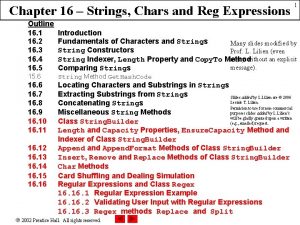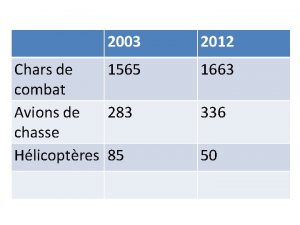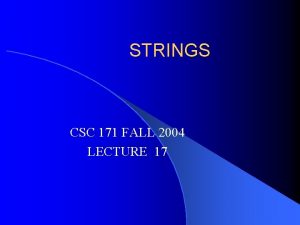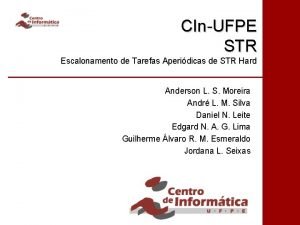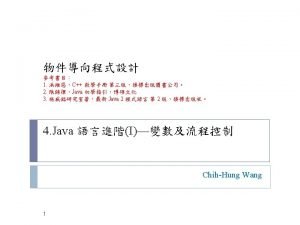Str AssignT chars Str CopyT S Str EmptyS







![Ø 获得next数组的算法 void get_next(Sstring T, int &next[]){ i=1; next[1]=0; j=0; while(i<T[0]){ if(j==0 || T[i]==T[j]){++i; Ø 获得next数组的算法 void get_next(Sstring T, int &next[]){ i=1; next[1]=0; j=0; while(i<T[0]){ if(j==0 || T[i]==T[j]){++i;](https://slidetodoc.com/presentation_image_h2/ba1dc8e00f5e4903c61d0d41feaf4cd5/image-8.jpg)




![特征值 i-j=0 Mat[0, 0] s g a b a c b a d f 特征值 i-j=0 Mat[0, 0] s g a b a c b a d f](https://slidetodoc.com/presentation_image_h2/ba1dc8e00f5e4903c61d0d41feaf4cd5/image-13.jpg)



![• 矩阵转置 void transpose(Elem. Type M[][], T[][]) 时间复杂度O(n×m) • “按需点菜”的思想 复杂度O(M. nu×M. tu) • 矩阵转置 void transpose(Elem. Type M[][], T[][]) 时间复杂度O(n×m) • “按需点菜”的思想 复杂度O(M. nu×M. tu)](https://slidetodoc.com/presentation_image_h2/ba1dc8e00f5e4903c61d0d41feaf4cd5/image-17.jpg)



![Status Concat(SString &T, SString S 1, SString S 2) { if (S 1[0]+S 2[0] Status Concat(SString &T, SString S 1, SString S 2) { if (S 1[0]+S 2[0]](https://slidetodoc.com/presentation_image_h2/ba1dc8e00f5e4903c61d0d41feaf4cd5/image-21.jpg)





- Slides: 26



Str. Assign(&T, chars) Str. Copy(&T, S) Str. Empty(S) Str. Compare(S, T) Str. Length(S) Clear. String(&S) Concat(&T, S 1, S 2) Substring(&Sub, S, Pos, len) Index(S,T,pos) Replace(&S, T, V) Str. Insert(&S, pos, T) Str. Delete(&S, pos, len) Destroy. String(&S) strcpy strlen(S)==0 strcmp strlen strcat 0<=pos<=Strlength(S)-1 strstr 0<=pos<=Strlength(S) 0<=pos<=Str. Length(S)-len } ADT String 最小操作子集 Str. Assign、Str. Compare、Str. Length、Concat,Substring ypb@ustc. edu. cn 3 中国科学技术大学

4. 2串的表示和实现 4. 2. 1定长顺序存储表示 • 两种表示方法 – 下标为 0的数组单元存放长度 (pascal) typedef unsigned char SString[MAXSTLEN+1] ; – 在串值后面加‘�’结束 (C语言) char str[10]; 算法 Status Concat(Sstring &T, Sstring S 1, Sstring S 2) 【注意】 T[]是否足够长度,溢出处理 算法 void Substring(char Sub[], char S[], int pos, int len) …Strncpy(Sub, &S[pos], len); Sub[len]=‘�’; … ypb@ustc. edu. cn 4 中国科学技术大学



![Ø 获得next数组的算法 void getnextSstring T int next i1 next10 j0 whileiT0 ifj0 TiTji Ø 获得next数组的算法 void get_next(Sstring T, int &next[]){ i=1; next[1]=0; j=0; while(i<T[0]){ if(j==0 || T[i]==T[j]){++i;](https://slidetodoc.com/presentation_image_h2/ba1dc8e00f5e4903c61d0d41feaf4cd5/image-8.jpg)
Ø 获得next数组的算法 void get_next(Sstring T, int &next[]){ i=1; next[1]=0; j=0; while(i<T[0]){ if(j==0 || T[i]==T[j]){++i; ++j; next[i]=j; } else j=next[j]; } } Ø 改进后获得next数组(nextval)算法 (红色部分改写如下) if(T[i]!=T[j])nextval[i]=j; else nextval[i]=nextval[j]; ypb@ustc. edu. cn 8 中国科学技术大学

4. 3数组 数组的定义 ADT Array{ 数据对象:D={aj 1 aj 2…ajn| aj 1 aj 2…ajn∈Elemset, ji=0, 1, …bi-1, bi是数组第i维的长度,n是位数} 数据关系:R={R 1, R 2…Rn} Ri={< aj 1…aji…ajn , aj 1…aji+1…ajn >| aj 1…aji…ajn , aj 1…aji+1…ajn ∈D, i=2, 3…n 0<=jk<=bk-1, 1<=k<=n, k!=I 0<=ji<=bi-1 } ypb@ustc. edu. cn 9 中国科学技术大学

基本操作 : init. Array(&A, n, bound 1, bound 2. . . boundn) Destroy. Array(&A) Value(A, &e, index 1, index 2. . . indexn) Assign(&A, e, index 1, index 2. . . indexn) }ADT Array • 二维数组定义 – 其数据元素是一维数组的线形表 • N维数组定义 – 其数据元素是N-1维数组的线形表 ypb@ustc. edu. cn 10 中国科学技术大学


![特征值 ij0 Mat0 0 s g a b a c b a d f 特征值 i-j=0 Mat[0, 0] s g a b a c b a d f](https://slidetodoc.com/presentation_image_h2/ba1dc8e00f5e4903c61d0d41feaf4cd5/image-13.jpg)
特征值 i-j=0 Mat[0, 0] s g a b a c b a d f g b a c s t g 1 a 1 1 b 1 1 a 1 1 1 a b i-j 为固定值 1 1 f g 1 1 d 特征值 i-j=m-1 特征值 i-j=-(n-1) 1 1 1 Mat[m-1, n-1] 1 1


随机稀疏矩阵的存储表示 • 三元组顺序表 const MAXSIZE=1000 typedef struct{ int i, j; Element. Type e; }Triple; typedef struct{ Triple data[MAXSIZE+1]; int mu, nu, tu; }TSMatrix; ypb@ustc. edu. cn 15 中国科学技术大学

三元组顺序表示例 • (下标从1开始) (a) M. data i j e 1 1 3 -3 9 2 1 6 15 1 -3 3 2 1 12 3 6 14 4 2 5 18 5 4 3 24 5 3 1 9 6 5 2 18 6 3 4 24 7 6 1 15 7 4 6 -7 8 6 4 -7 8 6 3 14 i j e 1 1 2 12 2 1 3 3 3 4 (b) T. data cpot[1]=1 cpot[col]=cpot[col-1]+num[col-1] 2<=col<=nu col 1 2 3 4 5 6 7 num[col] 2 2 2 1 0 cpot[col] 1 3 5 7 8 8 9
![矩阵转置 void transposeElem Type M T 时间复杂度Onm 按需点菜的思想 复杂度OM nuM tu • 矩阵转置 void transpose(Elem. Type M[][], T[][]) 时间复杂度O(n×m) • “按需点菜”的思想 复杂度O(M. nu×M. tu)](https://slidetodoc.com/presentation_image_h2/ba1dc8e00f5e4903c61d0d41feaf4cd5/image-17.jpg)
• 矩阵转置 void transpose(Elem. Type M[][], T[][]) 时间复杂度O(n×m) • “按需点菜”的思想 复杂度O(M. nu×M. tu) • “按位就座”的思想 – 建立辅助数组 num[n] cpot[n] void createpos(TSMatrix M) – 快速转置 status fast. Transpose. SMatrix(TSMatrix M, TSMatrix T) 时间复杂度 O(M. nu+M. tu) ypb@ustc. edu. cn 17 中国科学技术大学


• 十字链表 – 矩阵运算增加或减少非零元时,使用链表结构来表 示三元组序列。 typedef struct OLNode{ int i, j; Element. Type e; struct OLNode *rnext, *cnext; }OLNode, *Olink; typedef struct { Olink *rhead, *chead; int mu, nu, tu; }Cross. List; ypb@ustc. edu. cn 19 中国科学技术大学

![Status ConcatSString T SString S 1 SString S 2 if S 10S 20 Status Concat(SString &T, SString S 1, SString S 2) { if (S 1[0]+S 2[0]](https://slidetodoc.com/presentation_image_h2/ba1dc8e00f5e4903c61d0d41feaf4cd5/image-21.jpg)
Status Concat(SString &T, SString S 1, SString S 2) { if (S 1[0]+S 2[0] <= MAXSTRLEN) { // 未截断 for (i=1; i<=S 1[0]; i++) T[i] = S 1[i]; for (i=1; i<=S 2[0]; i++) T[i+S 1[0]] = S 2[i]; T[0] = S 1[0]+S 2[0]; uncut = TRUE; } else if (S 1[0] < MAXSTRLEN) { // 截断 for (i=1; i<=S 1[0]; i++) T[i] = S 1[i]; for (i=S 1[0]+1; i<=MAXSTRLEN; i++) T[i] = S 2[i-S 1[0]]; T[0] = MAXSTRLEN; uncut = FALSE; } else { // 截断(仅取S 1) for (i=0; i<=MAXSTRLEN; i++) T[i] = S 1[i]; uncut = FALSE; } return uncut; } // Concat ypb@ustc. edu. cn 21 中国科学技术大学

Status Str. Insert(HString &S, int pos, HString T) { // 1≤pos≤Str. Length(S)+1。在串S的第pos个字符之前插入串T。 if (pos < 1 || pos > S. length+1) return ERROR; if (T. length) { // T非空, 则重新分配空间, 插入T if (!(S. ch = (char *)realloc(S. ch, (S. length+T. length) *sizeof(char)))) return ERROR; for (i=S. length-1; i>=pos-1; --i) // 为插入T而腾出位置 S. ch[i+T. length] = S. ch[i]; for (i=0; i<T. length; i++) // 插入T S. ch[pos-1+i] = T. ch[i]; S. length += T. length; } return OK; } // Str. Insert ypb@ustc. edu. cn 22 中国科学技术大学




三元组存储数组的快速转置 Status Fast. Transpose. SMatrix(TSMatrix M, TSMatrix &T) { // 算法 5. 2 // 采用三元组顺序表存储表示,求稀疏矩阵M的转置矩阵T T. mu = M. nu; T. nu = M. mu; T. tu = M. tu; if (! T. tu) return FAIL; for (col=1; col<=M. nu; ++col) num[col] = 0; for (t=1; t<=M. tu; ++t) // 求 M 中每一列所含非零元的个数 ++num[M. data[t]. j]; cpot[1] = 1; // 求 M 中每一列的第一个非零元在 b. data 中的序号 for (col=2; col<=M. nu; ++col) cpot[col] = cpot[col-1]+num[col-1]; for (p=1; p<=M. tu; ++p) { col = M. data[p]. j; q = cpot[col]; T. data[q]. i =M. data[p]. j; T. data[q]. j =M. data[p]. i; T. data[q]. e =M. data[p]. e; ++cpot[col]; } // for } // Fast. Transpose. SMatrix ypb@ustc. edu. cn 26 中国科学技术大学
![Chars = [0] * 128 Chars = [0] * 128](data:image/svg+xml,%3Csvg%20xmlns=%22http://www.w3.org/2000/svg%22%20viewBox=%220%200%20200%20200%22%3E%3C/svg%3E) Chars = [0] * 128
Chars = [0] * 128![Chars = [0] * 128 Chars = [0] * 128](data:image/svg+xml,%3Csvg%20xmlns=%22http://www.w3.org/2000/svg%22%20viewBox=%220%200%20200%20200%22%3E%3C/svg%3E) Chars = [0] * 128
Chars = [0] * 128 Unsigned char
Unsigned char Char(0)
Char(0) Who are the characters in the story passage a
Who are the characters in the story passage a Ifabc ∼ rst, then str ∼ bca.
Ifabc ∼ rst, then str ∼ bca. Python programming
Python programming Char
Char Ktki kemkes
Ktki kemkes Eperativo
Eperativo Rams residence
Rams residence Str
Str String str president
String str president Joint financial intelligence unit
Joint financial intelligence unit Str
Str Words with str
Words with str Relativity str
Relativity str Human identity testing
Human identity testing A single str may differ between two unrelated people by
A single str may differ between two unrelated people by Strding
Strding Str
Str Bioreattore
Bioreattore Char str
Char str Dim str as string
Dim str as string Jfiu str
Jfiu str Pagina.php?str=
Pagina.php?str= Strs and vntrs
Strs and vntrs
![Chars = [0] * 128 Chars = [0] * 128](https://slidetodoc.com/wp-content/uploads/2020/11/2552879_9e37114c6b84c82c1e68cd05d41a4f8b-300x225.jpg)
![Chars = [0] * 128 Chars = [0] * 128](https://slidetodoc.com/wp-content/uploads/2020/11/2253675_8306baa31f7a842cb260253fcf8641e4-300x225.jpg)

